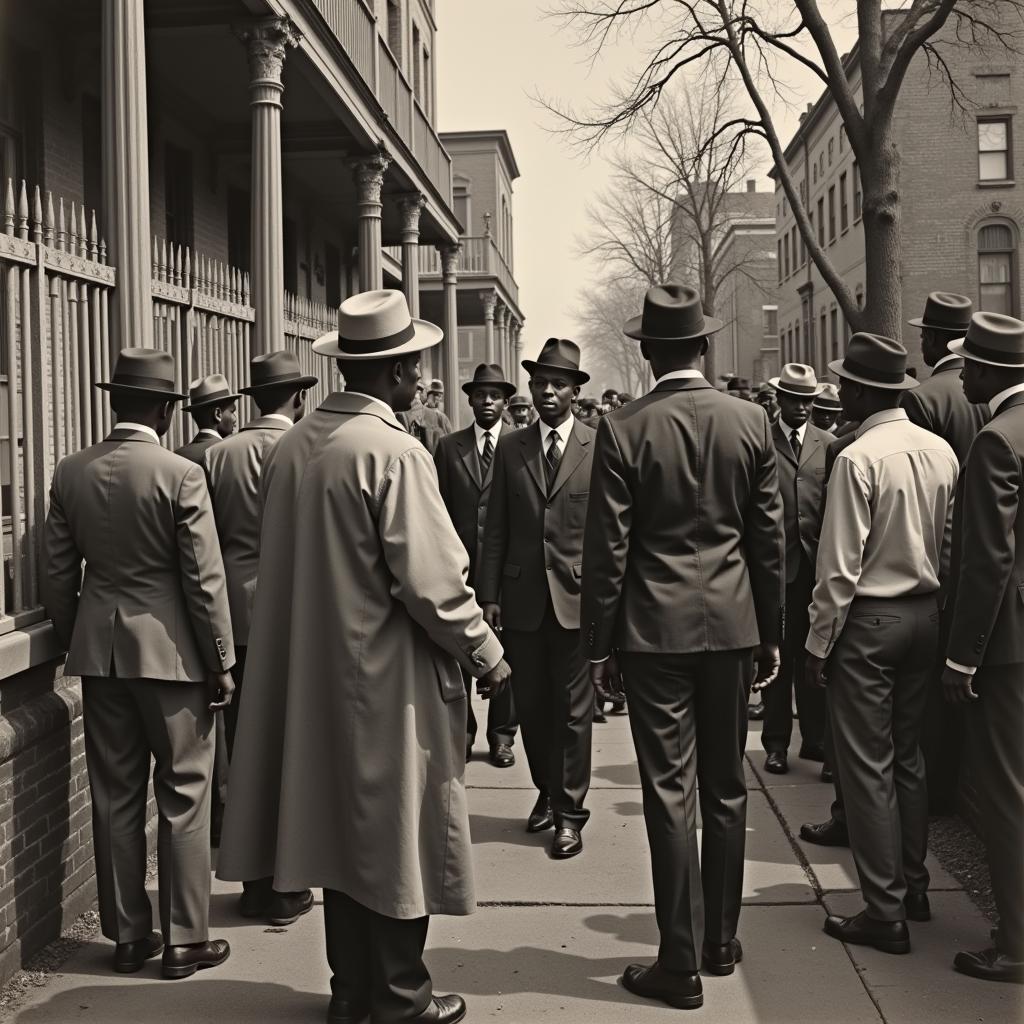African American Being Harassed: Understanding the Reality and Finding Solutions
The pervasive issue of African Americans being harassed continues to cast a shadow over society. This article delves into the historical context, contemporary manifestations, and potential solutions for addressing this deeply rooted problem. We’ll explore the various forms harassment takes, its impact on individuals and communities, and the ongoing efforts to combat it.
The Historical Context of Harassment Against African Americans
Harassment against African Americans is not a recent phenomenon. Its roots lie deep within the history of slavery and systemic racism. From the Jim Crow era to the Civil Rights Movement, African Americans have faced constant threats, intimidation, and violence. These historical injustices have created a foundation for the harassment that continues to plague communities today.
 Historical depiction of harassment against African Americans
Historical depiction of harassment against African Americans
From Slavery to Jim Crow: A Legacy of Harassment
The legacy of slavery and Jim Crow laws has left an indelible mark on the experience of African Americans. These systems of oppression normalized the dehumanization and mistreatment of black people, creating a culture of impunity for those who perpetrated acts of harassment.
The Civil Rights Movement and Beyond
While the Civil Rights Movement achieved significant progress in dismantling legal segregation, the underlying prejudices and discriminatory practices persisted. African Americans continued to be targeted for harassment, often in more subtle and insidious ways.
Contemporary Manifestations of Harassment
Harassment against African Americans takes on many forms in today’s society. It can range from overt acts of violence and intimidation to more subtle microaggressions and discriminatory practices. Understanding the various ways in which harassment manifests is crucial to effectively addressing the problem.
Racial Profiling and Police Brutality
Racial profiling by law enforcement remains a significant concern. African Americans are disproportionately targeted for stops, searches, and arrests, often based on stereotypes and biases rather than reasonable suspicion. This can lead to unwarranted harassment and even violence.
Online Harassment and Hate Speech
The rise of social media has created new avenues for harassment. African Americans are frequently subjected to online hate speech, cyberbullying, and other forms of digital harassment. This can have a devastating impact on individuals’ mental health and well-being.
Microaggressions and Everyday Discrimination
Microaggressions, subtle yet harmful acts of discrimination, are a pervasive form of harassment. These seemingly small incidents, such as being ignored or treated with disrespect, can accumulate over time and have a significant negative impact.
Finding Solutions and Moving Forward
Addressing the issue of African American Being Harassed requires a multifaceted approach involving legal reforms, community initiatives, and individual actions. It requires a collective commitment to creating a more just and equitable society.
Legal Reforms and Policy Changes
Strengthening laws against hate crimes and discrimination is crucial. Additionally, reforms within law enforcement agencies are necessary to address issues such as racial profiling and excessive force.
Community-Based Initiatives and Support Systems
Community organizations play a vital role in providing support and resources to victims of harassment. These initiatives can help empower individuals and create a sense of solidarity within the community.
Education and Awareness-Raising
Education and awareness-raising campaigns are essential for challenging harmful stereotypes and promoting understanding. By fostering empathy and respect, we can create a more inclusive and tolerant society.
Conclusion
The issue of African American being harassed is a complex and deeply rooted problem that demands our attention. By understanding the historical context, contemporary manifestations, and potential solutions, we can work together to create a future free from harassment and discrimination. It is our collective responsibility to ensure that all individuals are treated with dignity and respect.
FAQ
- What are some examples of microaggressions?
- How can I report an incident of harassment?
- What resources are available for victims of harassment?
- What role does systemic racism play in perpetuating harassment?
- How can I be an ally to African Americans facing harassment?
- What are some legal protections against harassment?
- How can communities work together to combat harassment?
Need Support? Contact us: Phone: +255768904061, Email: kaka.mag@gmail.com or visit us at Mbarali DC Mawindi, Kangaga, Tanzania. We have a 24/7 customer service team.


